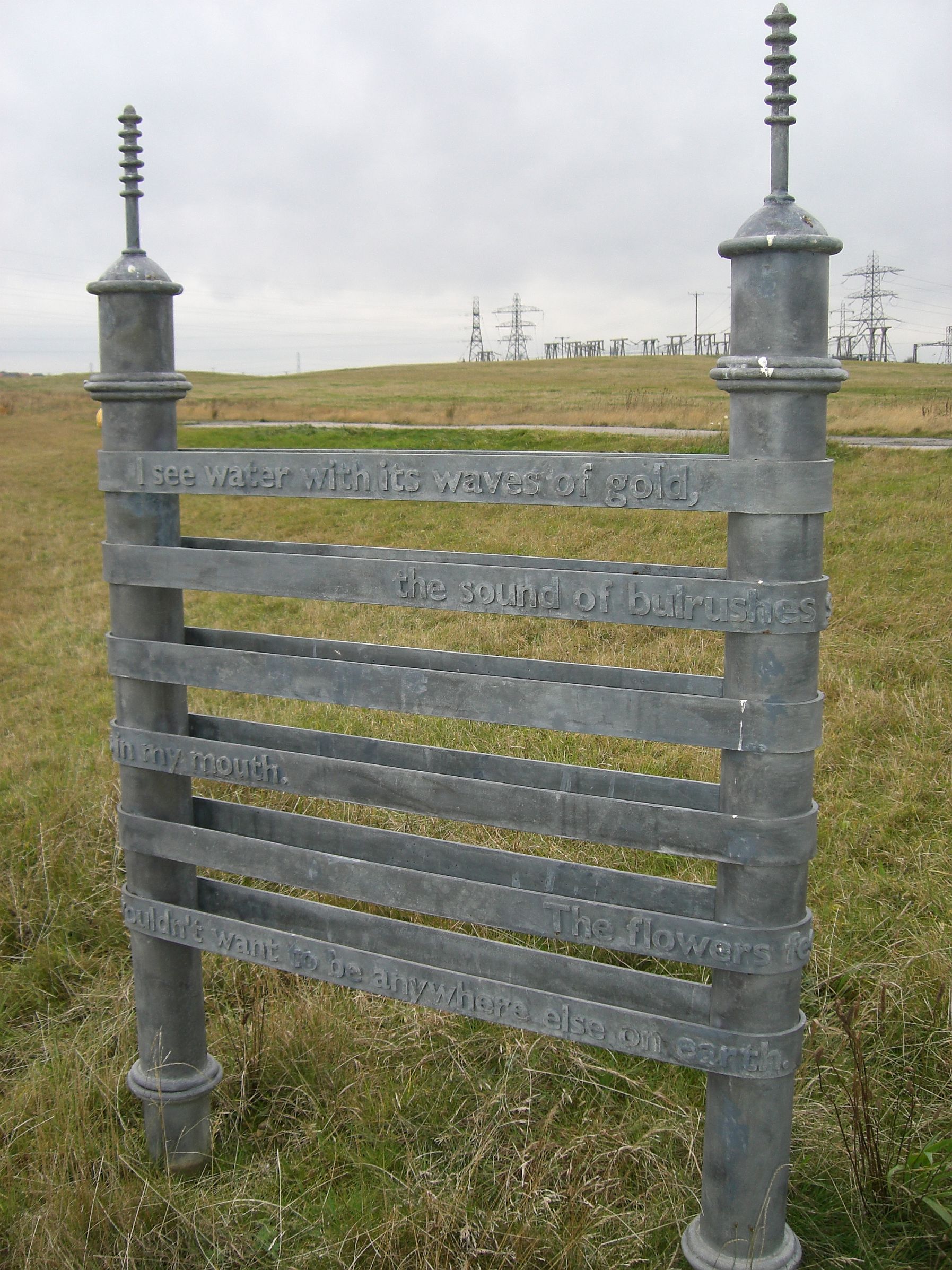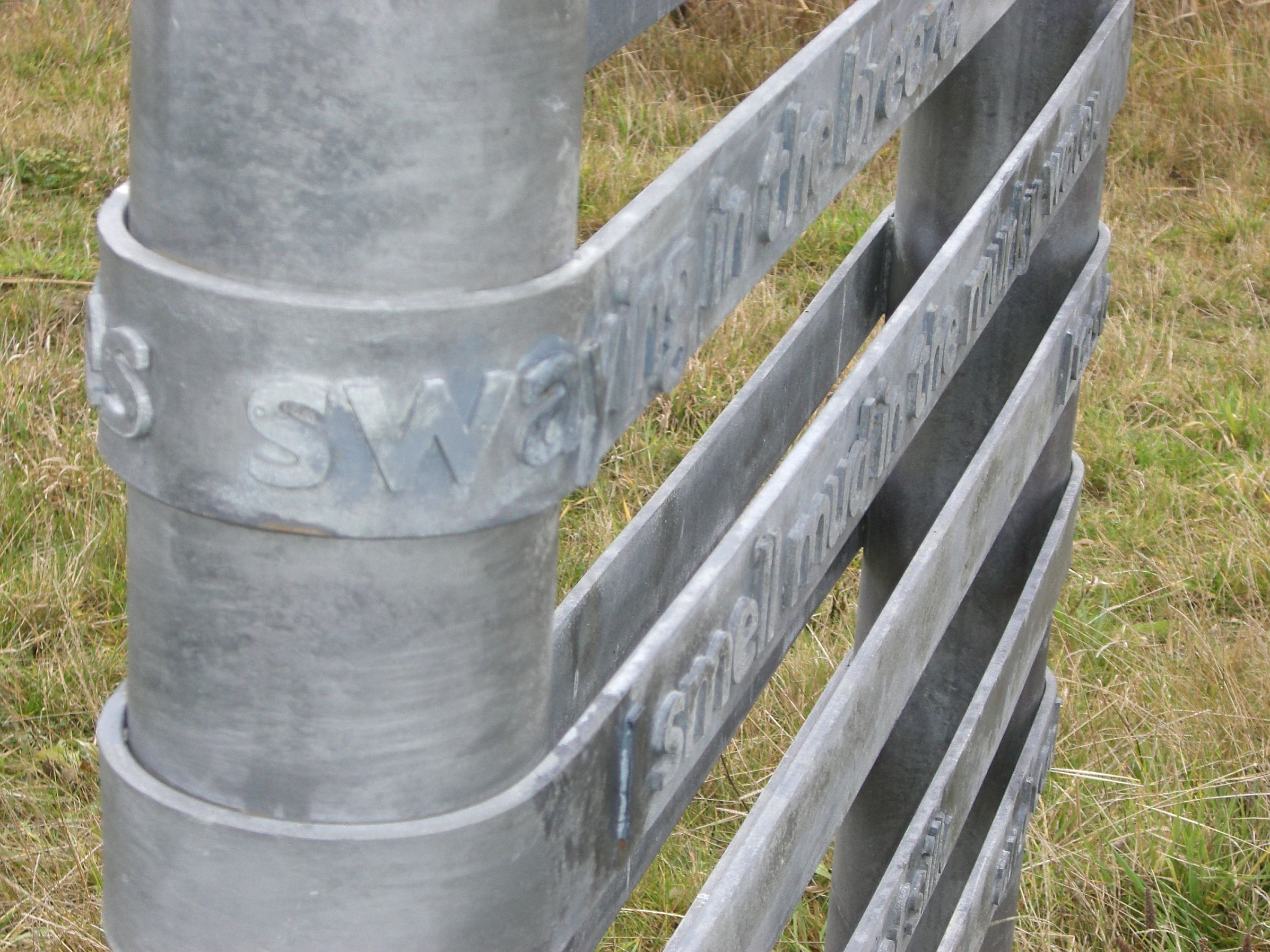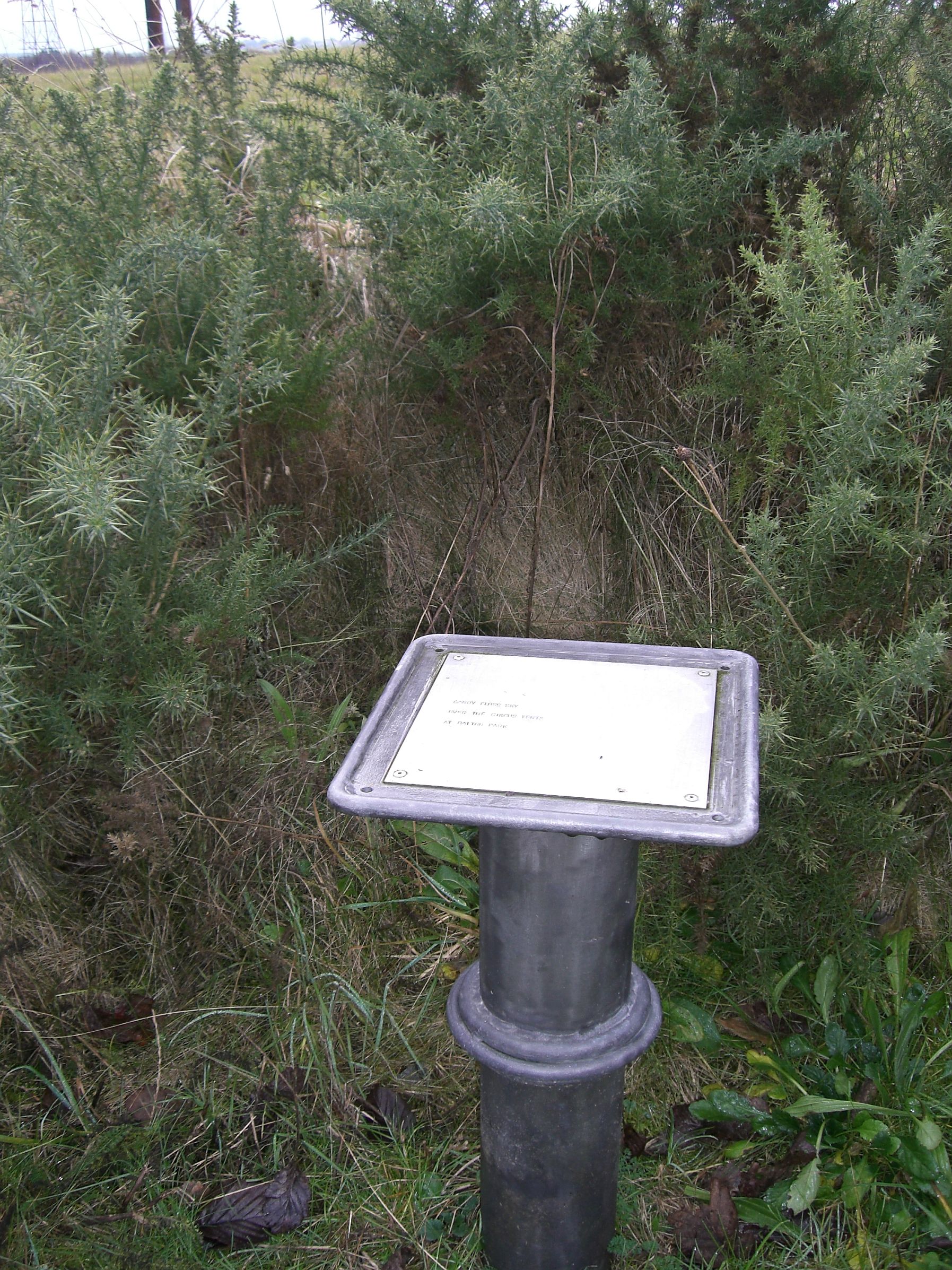A Place For Words: Hawthorn WordWorks, Murton
What happened?
Poet, Linda France, spent a year working with five different groups (three school groups, a youth groups and an adult community group) based in and around Murton, in the North East of England. The project – commissioned by the development agency, OneNortheast, and managed by literature agency New Writing North – created permanent pieces of work for a new public space on the former Hawthorn Cokeworks site; land which had to be decontaminated before reclaiming, replanting and redeveloping. The site is bleak one: vast swathes of grassland, a biting wind, one corner dominated by an electricity substation. Through spending time in the place, and with the people she had been asked to work with, Linda chose the theme of the elements to connect together the different groups and their work. She chose the four western elements - earth, fire, water, air - and added the Chinese elements, wood and metal.
The original idea was to work with a glass/steel artist, but Linda strongly felt the material did not fit the nature of the landscape, and so worked with blacksmith, William Pym, to create chunkier, heavier, well-wearing sculptures that fit with the bleakness of the landscape. The poems on the sculptures arose from a long period of time working with the groups, producing a lot of writing exploring the theme. Linda edited the material to create the final text, using a selection of different people's writing, and took her suggestions to the groups for approval. Extra material by single individuals was incorporated in small touchplates also installed around the site.
Once the sculptures were installed, an event was held to celebrate the work. Former participants have since worked on a map of the project to guide visitors to the pieces and explain the project.
Project Gallery

One of six poetry sculptures in situ in the public space

A close up of one of the poetry sculptures

One of the touchplates at Hawthorn Coke Works
What made it work?
- The length of time. Linda spent two days per week on the project over the period of a year, which gave her enough time to really get to know the place and the people involved.
- The project brought an appreciative, creative attention to an open space – taking into account the past, the present and trying to imagine a possible future.
- The project engaged local people in a creative dialogue about their environment. The collaborative nature of the work meant something was created that was greater than the sum of its parts
- The positive relationship between the writer and the blacksmith who designed and made the sculptures.
Further information and links:
« Back to Case Studies, Literature and public art (permanent outcomes)


